Roshan Malik
Bahawalpur State (1833-1955) has a unique architecture blended with Italian style. It was comprised of three districts (Bahawalpur, Bahawalnagar and Rahim Yar Khan). The last ruler Nawab Sir Sadiq Muhammad Khan Abbasi V ruled the State (1907-55) before it merged into the unitary province of Pakistan. The State reached the zenith of its glory under his rule, as he transformed Bahawalpur into an excellence of learning and centre of architecture. Various schools, colleges, palaces, mosques, hospitals and a library and university were built during his time.
Since ATP readers have already been talking about Bahawalpur architecture through the Photo Quiz on Noor Mahal and then again on the Baghdad-ul-Jadeed Railway station, it makes sense to talk about this scope and history of this architectural heritage at greater length.
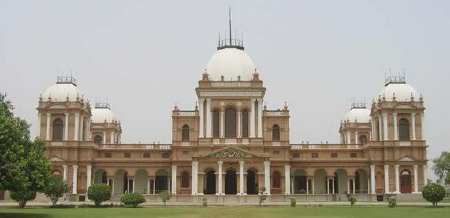
Sadiqgarh Palace (Sleeping Beauty Castle) is situated at Dera Nawab Sahib (Ahmedpur East), about 30 miles away from Bahawalpur, was the headquarters of the State.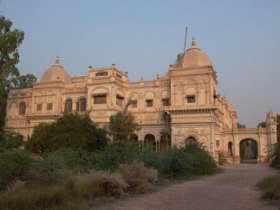 More than 1000 employees were deployed for the maintenance and beautification of the Palace and its lush green lawns. Nearly 100 rooms were decorated with crystal chandeliers, drapes, paintings and carpets.
More than 1000 employees were deployed for the maintenance and beautification of the Palace and its lush green lawns. Nearly 100 rooms were decorated with crystal chandeliers, drapes, paintings and carpets.
After Nawab’s death, the Palace had been sealed by the government for many decades due to a dispute among heirs. Many antiques had been stolen from the Sadiqgarh Palace and were sold in cities like Lahore, Karachi and Islamabad. The building of that glory now gives a deserted and shabby look surrounded by wild shrubs. The palace desperately needs maintenance and repair for the restoration of its grandeur.
Noor Mahal and Gulzar Mahal are the most elegant buildings in Bahawalpur built in the Italian style. Both the buildings are now under the control of Army. However, the army purchased the Noor Mahal some years back by paying Rs. 120 million to the heirs. It is unique in its architecture and is splendid with beautiful lawns and driveways.
 The late Nawab established various educational institutes in the State such as Islamia University Bahawalpur, Sadiq Public School Bahawalpur, Sadiq Egerton College Bahawalpur, Sadiq Dane High School Bahawalpur, Jamia Masjid al Sadiq Bahawalpur. The Central Library Bahawalpur is another landmark of Bahawalpur architecture which was built in 1924. This is the second largest library in Punjab having various manuscripts and rare books.
The late Nawab established various educational institutes in the State such as Islamia University Bahawalpur, Sadiq Public School Bahawalpur, Sadiq Egerton College Bahawalpur, Sadiq Dane High School Bahawalpur, Jamia Masjid al Sadiq Bahawalpur. The Central Library Bahawalpur is another landmark of Bahawalpur architecture which was built in 1924. This is the second largest library in Punjab having various manuscripts and rare books.
The famous Fort Derawar was once the capital of Bahawalpur State. It was built in thirteenth century by the Rajputs of Jaiselmer. The Nawabs of Bahawalpur conquered it in eighteenth century. It was a birth place of many Nawabs. The rulers of Bahawalpur give great importance to Derawar as their royal cemetery is near Derawar.
Derawar is about 65 miles away from Bahawalpur in Cholistan desert. The historic Derawar Fort, enormous and impressive structure in the heart of Cholistan desert, is rapidly crumbling and if the immediate preventative measures are not taken, the edifice will be destroyed and the historians, researchers and sightseers deprived of the view of the legacy of the bygone era.
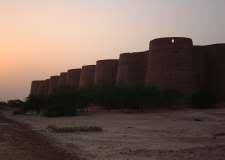
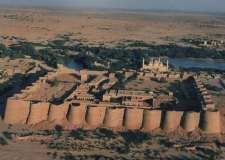
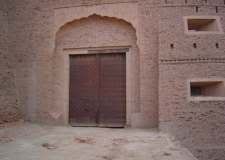
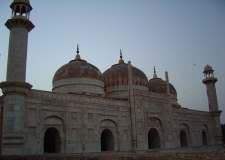
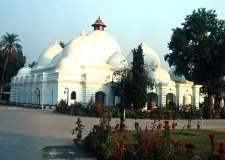

The legacy of Bahawalpur state has been in ruins like many other historical places of the country. These building have potential to attract a great deal of tourists. But what the heirs and the government need is a good planning and political will. Otherwise it will turn into sands like many other forts in Cholistan like Maujgarh, Dingarh, Islamgarh and Marot.
The cluster of 6 pictures, above, includes: (1) One of the still-intact but crumbling walls of Fort Derawar, (2) Aerial view of the fort, (3) Mosque Derawar, (4) Entrance to Fort Derawar with potholes, (5) Services Club Multan, was once Rest House of Nawab of Bahawalpur, (6) Sadiq Public School, Bahawalpur.
Roshan Malik is a development practitioner from the Bahawalpur region.



















































I have had the oppurtunity of visiting all these buildings when I was a child and a young man. What awesome buildings these were. Noor Mahal had fountains, bronze statues, crystal chairs and wonderful interiors and pruned gardens. Sadiqgarh was simply fantastic with artifacts of immense value, darbar hall with crystal throne and chairs, gold cutlery sets, exquisite china, one of the largest chandeliers in the world, priceless furniture, unique mirrors, rare ancient clocks, a wonderful collection of finest carpets and a small museum which held in its treasures, great Saladin Ayubi’s sword. Nawab SadiqMohammad’s motorkhana was full of custom made Rolls Royces and other expensive cars. During the life time of the Amir of Bahawalpur, semblence of order was maintained despite the financial hardships but after his demise, his successors started the court battles for inheritence and these properties became disputed. During this period plunder of these properties started by any one who could lay hands on these and valueables started vanishing. Maintenance of these buildings stopped and once the beatiful buildings turned into desolate places. Hence the Army entered the scene to meet it’s need of accomodation for newly raised formations. Noor Mahal and Gulzar Mahal atleast have escaped the fate of Sadiqgarh Palace which remains totally neglected. All these buildings should be declared Heritage sites and the Nawab Sahib’s successors should agree on some arrangement to preserve their heritage. The princely families in India have created some models which Bahawal Pur family can also follow with Govt.’s support. I fully agree that the public should have access to see these historical buildings.
BAHAWAL PUR-CITY OF MY BIRTH-ENCHANTING CITY-gframesch
Dear Owais Mughal: thanks for your comments.
My father served as a teacher in S.D. High School, Bahawalpur. The Fareed gate used to call Beeka Nairee Gate. The transport from Fareed Gate to Baghdad ul Jadeed was only “Tangas and Cycle Rikshaws”. The Darbar Mahal was in use of different offices including Commissioner Office. There was single road from Bahawalpur rail station to Baghdad rail station. The people were not going to circular road after Maghrab time. Now a days this city is well develop and compete the big cities of Pakistan. But in education sector, this city is well known from very begining and is rich with renowned educational institutions including Jamia Abbasia, S.E. College and Sadiq Public School. The Bahawal Victoria Hospital celebrated its 100 year anniversary in 2006.
Dr. Salahuddin, thanks for stopping by and sharing your memories of Bahawalpur. What else do you remember from Bahwalpur of yesteryears. We’d like to read more of your experiences and memories.
I belong to Bahawalpur since birth. I am Quadian and did my Medical Graduation in 1984. I am a Psychiatrist and worked as Head of Psychiatry in the same institution from 1989 to 1999. Now a days I am a professor and Director of Health Studies at London Graduate School and Academic Fellow of a University. My all brought up is from Bahawalpur. It is my home city. It is a beautful and excellent city with a rich culture. I love my home city.